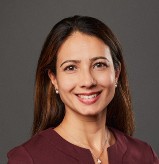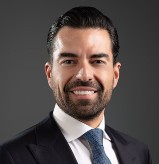Our Fund Finance team from London and Luxembourg share insights from the European Strategic Forum 2025 and the 9th Annual European Fund Finance Symposium in London.
The Fund Finance Association's flagship European events brought together GPs, LPs, banks, non-bank lenders and service providers for an opportunity to network and discuss trends in the fund finance market.
Our team share their key takeaways from the events:
General market outlook
A “wait and see” approach prevails in the industry. The year may have started with a sense of enthusiasm for doing deals in 2025, but this has been followed by a period of uncertainty (the big U) given increased geopolitical volatility and an inability to underwrite many deals with full confidence. General M&A activity has been slow and hesitant, with exits and distributions still below expectations. The fundraising environment has remained somewhat subdued, but fundraising has been positive for the top end of the market, with larger, more established funds faring better as market uncertainty has driven investors towards the 'mega funds' raised by such established funds with a solid track record.
The global economy remains operational despite the disruptions and surprises of 2025, and dry powder is immense. Many funds are sitting on substantial portfolios with players waiting for more predictable levels of macroeconomic and geopolitical calm to put money to work.
That said 2024 and 2025 have seen some mega deals in North America and APAC, a sign of enhanced consolidation in the market. Data shows that institutional investors are allocating up to 20% of their means to alternatives, with PE and infrastructure being amongst the asset classes of choice. Private debt volumes are relatively steady due to interest rate reductions over the past 12 months. The FED even lowered its rate by a quarter this week.
The fund finance market is poised for a comeback of sublines, with new features such as term tranches and securitisation, while NAV facilities as a lending tool are becoming more prevalent as their use case is further clarified and accepted.
Subscription line facilities
Fundraising in the softer market conditions has witnessed both a flight to quality in terms of managers and a slower fundraising process. A number of funds are therefore experiencing multiple closes, resulting in a concentrated LP base at first close. This feature has in turn led to a more drawn-out diligence and establishment process for appropriate subscription line facilities. Alongside this, the market is seeing innovations in subscription line facilities including term tranches which have been compared to a “term loan B” in the leverage world.
Continuation vehicles and NAV-based facilities
Solutions to the question of what to do whilst valuations and exits are still depressed, include the increasing use and establishment of continuation vehicles (CVs) with GP-led processes on the rise. Separately NAV-based financing across varying asset classes has continued to attract the attention of GPs especially given the proliferation of NAV lenders in the market. The adoption of such financing solutions, together with broader capital solutions such as pref equity and GP stakes, is under consideration by more funds. Managers and CFOs are investigating a broader suite of options, and the growth of CVs and NAVs in particular is expected to continue.
GP financings and CFOs
In view of market conditions and aware of the increased range of external financing products available to funds, LPs continue to expect GPs to have (more) “skin in the game”. To answer this, more GPs are considering GP financing itself as a tool and lenders are seeing up to 23% of the fund finance market share allocated to this offering. Innovative structuring and strategies are evolving in this segment of the market as the lender base continues to expand, offering a greater variety of financing options to GPs. Corporate structures, manager financing plans and collateralised fund obligations (CFOs) are all part of the arsenal for lenders tackling market needs. Borrowers in this space require tailored-made solutions as each GP is unique in terms of its maturity, size and composition, with some longer standing GPs having diverse and multiple fund positions. Certain GPs require long-term financing, others are eager to de-leverage their position as soon as practically possible. Managers also experience succession constraints, with junior members being promoted and requiring financing solutions.
Institutional investors
Institutional investors were historically slower to enter the fund finance market due to regulatory constraints. This trend is being reversed with insurance companies developing new strategies and actively looking for more opportunities to participate in the fund finance market. Insurance and pension fund players are looking to diversify their credit exposures by offering innovative liquidity and debt solutions, exploring sublines and NAV products specifically.
Sponsors view this positively: institutional LPs looking to develop their debt business often enhance sponsors' equity fundraising whilst offering sponsors a handy liquidity management tool. Institutional investors are increasingly agnostic when it comes to fixed or floating interest rates and different currencies. Moreover, operational developments and optimisation mean that they are now increasingly able to offer revolvers as well as term loans whilst respecting regulation as to the matching of timing for their assets and liabilities
Securitisation and the “structuralisation” of fund finance
The market is seeing a continued rise in the use of securitisation structures and an increasing overlap between traditional fund finance and the structured finance market. This trend assumes more detailed reporting obligations and associated costs, but upcoming changes in legislation are expected to be a positive development which participants hope will provide greater clarity around the regulatory requirements depending on the use case and context.
Ratings
Ratings are becoming increasingly common in fund finance transactions. GP sentiment towards ratings is positive as long as they are not public. Demand for ratings has been partly driven by European banks (who alongside Japanese banks are most likely to push for public ratings). For NAV facilities leverage remains the most important factor behind rating quality. Contrary to popular belief most NAV loans benefit from low LTV rates (50-60%) allowing them to potentially receive an investment grade rating (depending on the portfolio). Ratings for feeder funds and continuation funds are relatively more complex where more due diligence is required.
Evergreen funds and hybrids
Evergreen funds appear to be on the rise, including those backed by High Net Wealth. In this context, the 'retailisation' of the investor base requires thoughtful, tailor-made legal protections to cater for more closely scrutinised structures given regulation designed to protect individuals, even those at the more sophisticated investor end of the market.
Hybrid facilities, which combine elements of subscription lines and NAV products, can be used to address the evergreen challenge and bridge the liquidity gap between investor commitments at the top and assets at the bottom of the fund structure.
SMAs
The deal volume of SMAs has also seen a significant increase in the last 12 months. Demand has been driven by the EMEA, MENA and APAC regions with large LPs finding SMAs an attractive option given the global geopolitical and economic uncertainty. From an LP perspective locking their capital into SMAs means potentially lower fees, but more co-investment opportunities with GPs and enhanced control and transparency. Market participants noted that private credit followed by infrastructure seem to be the most relevant sectors for SMAs.
Looking ahead
As Q3 2025 picks up pace, the fund finance market is looking ahead with cautious optimism. With the proven ability to innovate, the various fund finance providers and partners (including banks, non-bank lenders, institutional investors and credit funds) are ready for the challenge of designing new strategies and structures. Despite the uncertainty of the global markets, funds are able to explore a wide range of liquidity options and credit solutions. GPs have a wealth of choice at their disposal.



